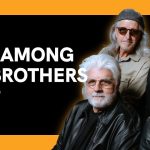As far as Asian representation in Hollywood is concerned, there is still a long way to go, but there are pioneers who have set the stage for today’s talent.
While fighting against stereotypes in their performances, movies, and activism, Asian and Asian American actors are carrying the torch that the Golden Age performers who came before them kindled. So join FactsVerse as we recognize the groundbreaking Asian American performers of the Golden Age who shaped the Hollywood of today.
Anna May Wong
Anna May Wong, an American of Chinese ancestry who made her acting debut in the 1922 film The Toll of the Sea, is often considered to be the most famous Asian performer of Hollywood’s Golden Age. Anna May Wong’s career spanned from 1919 through 1961, making her the first Chinese-American film star. She was born Wong Liu-Tsong and has appeared in over 60 films, as well as television, theatre, and radio.
Wong was also a fashion plate, having been named the “world’s best-dressed woman” by the New York-based Mayfair Mannequin Society in 1934. However, one of the worst setbacks in Wong’s career was when she was passed over for the lead role of the Chinese heroine O-Lan in MGM’s 1937 production of The Good Earth by Pearl S. Buck, which ultimately went to a white actress.
Wong was successful in her own right, yet she still spoke out about the shortage of good Asian casting in Hollywood.
She claimed to be sick and tired of the roles she was asked to play, which drove her to take a hiatus from acting in 1949.
By the time her 1957 show, The Gallery of Madame Liu-Tsong aired, Wong had become the first Asian American to star in a mainstream television series.
Bruce Lee
There is little debate that Bruce Lee is one of the most well-known and influential Asian actors of all time. Before his death in 1973, he only appeared in five feature films as a leading man, yet he single-handedly destroyed the stereotype of the weak Asian. Before Lee’s time, Asian males were frequently portrayed as immature and infantile in American popular culture, as coolies, domestics, etc. However, a film and media studies professor at Colorado State University named Hye Seung Chung told ABC News in 2005 that Bruce Lee had disproved these stereotypes about Asian men with his excellent physique, strength, and attractiveness.
Sessue Hayakawa
Sessue Hayakawa, a Japanese actor, became a Hollywood superstar during the golden age of silent cinema. Hayakawa was pigeonholed by American culture as a gorgeous, gloomy villain, making him a sex icon among female audiences. During the 1910s and 1920s, he was a prominent Hollywood heartthrob, right up there with Valentino. The Japanese actor rose to prominence after appearing in Cecil B. DeMille’s 1915 silent thriller “The Cheat.” The movie was an instant hit, and filmgoers at the time marvelled at the film’s apparent interracial sexuality.
After relishing his heartthrob moments in Hollywood, Sessue spent the next several decades enjoying great success on Broadway before making his way back to the silver screen. Among Hayakawa’s more than eighty film credits are Daughter of the Dragon (1931) and the Academy Award-nominated classics The Bridge on the River Kwai (1957).
James Shigeta
James Shigeta was a third-generation Japanese American who participated in the Korean War and was born in Hawaii. When he returned to America, he launched a career as a nightlife performer under the alias “Guy Brion.”
Shigeta shot to fame after being cast as Wang Ta in the 1961 film adaption of the musical Flower Drum Song. The movie made history because it included an ensemble cast that was primarily comprised of Asian Americans, something that had never been done before in Hollywood. The film was well-received by audiences of all kinds, but notably those of Asian descent; it was nominated for five Academy Awards.
Shigeta became well-known for his roles in films including Bridge to the Sun (1962), Walk Like a Dragon (1960), and The Crimson Kimono (1959). (1961).
When interviewed for the 2006 documentary The Slanted Screen: Asian Men in Films and Television, Shigeta recalls being informed by an MGM director that he would be much more successful if he were white. That statement, he claims, led him to believe that discrimination was more of an issue for most Asian actors.
Before we proceed, be sure to hit the like button and subscribe to the channel If you haven’t already. Don’t forget to hit the post notification bell to be among the first to be notified on our daily uploads.
Miyoshi Umeki
One of the most well-known Asian Hollywood actresses of the 1950s was Japanese-born Miyoshi Umeki. Miyoshi is most recognized for her Oscar-winning role as Katsumi, a Japanese war bride, in the 1957 film ‘Sayonara.’ In addition to Umeki, Youn Yuh-Jung is the only other actress of Asian descent to have won an Academy Award, making her the first Asian woman to receive it. Youn Yuh-Jung got her Academy Award in 2021 for her performance in ‘Minari’. Umeki, who is also a talented vocalist in her own right, was up for both a Tony and a Golden Globe in the ’50s. By the early 1970s, Umeki had retired from performing after a successful career in television, Broadway, and the movies.
Keye Luke
As an Asian American actor, Keye Luke made his Hollywood debut in the 1934 film The Painted Veil, costarring Greta Garbo; however, his role was uncredited. Three years after his birth in China, Luke and his family relocated to the United States. According to Turner Classic Movies, he was chosen for The Painted Veil when an MGM executive was searching for a Chinese actor with excellent English diction. But prior to becoming famous, Luke had a career as a commercial artist in Hollywood, creating advertising for Fox and RKO theatres.
Luke’s breakthrough role was as Charlie Chan’s “Number One Son,” Lee Chan, in a series of films based on the comic character of the same name.
Merle Oberon
The fact that this stunning woman was the first Indian actress ever nominated for an Oscar was largely overlooked at the time. In order to advance her career, several Hollywood officials covered up her Anglo-Indian heritage for the entirety of her career. Prior to her death in 1979, Oberon claimed to be an Australian of Tasmanian descent, but it was later discovered that she was born and brought up in Mumbai. The Trouble With Merle, a 2002 documentary examining Oberon’s life, was directed by Marée Delofski. And according to him, the studio rewrote her biography and she had to live that life narrative for as long as she wanted to be an actress.
Nancy Kwan
The first significant role of Nancy Kwan’s career came in the British-American romantic drama movie The World of Suzie Wong, in which she portrayed the title character (1960). The Chinese American actress also appeared in Flower Drum Song, a movie based on the 1958 Broadway musical, the following year as Linda Low.
The Los Angeles Times published an article and photo shoot on Kwan in 1960, and in it, they admitted that she was frequently cast in similar roles. Nancy Kwan, who is of mixed European and Asian ancestry, had disturbing premonitions of being typecast as a geisha girl, Madame Butterfly, or the protagonist of a James Michener novel. So she made her way to a photographer’s studio and spent some time changing into and out of various disguises. In an interview published in May 2021 on the Filipino news website Rappler, Kwan reflected on her career and recalled that there were only a small number of Asian actresses working in the early 60s, but that they were always there to support each other.
Benson Fong and Maylia Fong
Benson Fong, who started his career in an uncredited appearance in Charlie Chan at the Opera (1936), was born in Sacramento, California. Soon after, Fong was cast as “Number Three Son” Tommy Chan in a number of Charlie Chan movies. In addition to his part as Master Wang in Flower Drum Song, he has played a variety of different characters in films, including a Japanese officer, a Chinese clerk, a houseboy, a scout from South Korea, a chef, and a guerrilla.
In 1946, Benson married actress Gloria Suie Chin, who was primarily known as ‘Maliya’. In 2016, the Hollywood Reporter published an obituary for the late actress, where it was revealed that she had signed a deal with Columbia Pictures and been assigned the stage name Maylia, which translates to “beautiful” in Cantonese. Maliya made her acting debut in the 1947 movie Singapore, where she played a maid, and went on to portray an orphaned Chinese adolescent in the 1950 flick, To the Ends of the Earth.
There you have it. It’s now time to hear from you. Let us know what your favourite part of the video is. Remember to show your support by liking this video and subscribing to the channel. Enabling post notifications will ensure that you don’t miss any of our daily uploads. Catch you in the next one.


